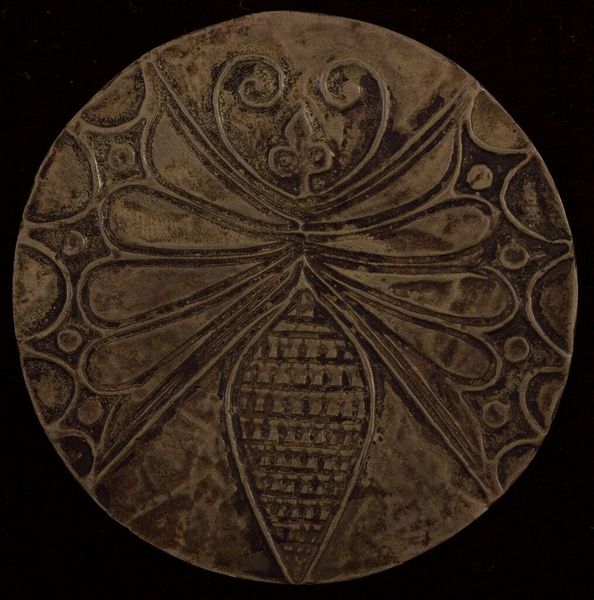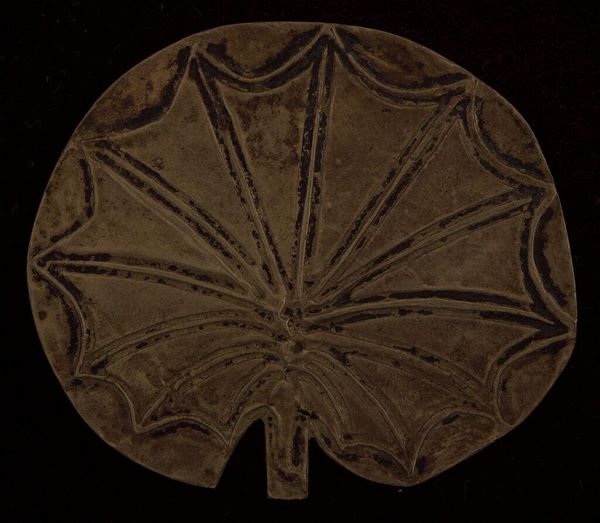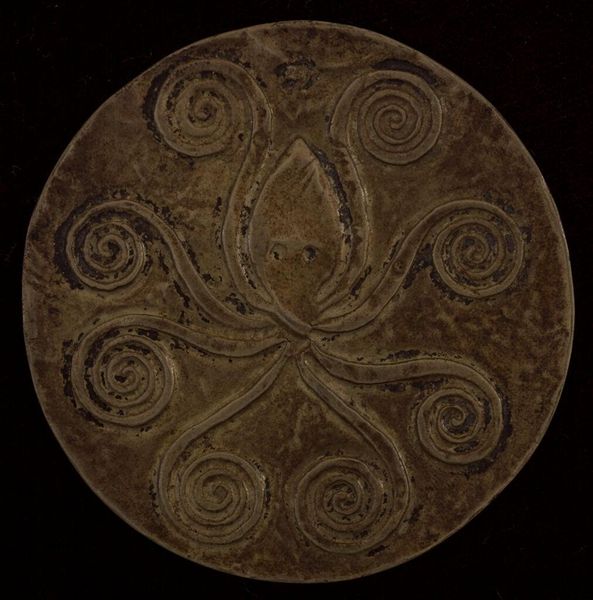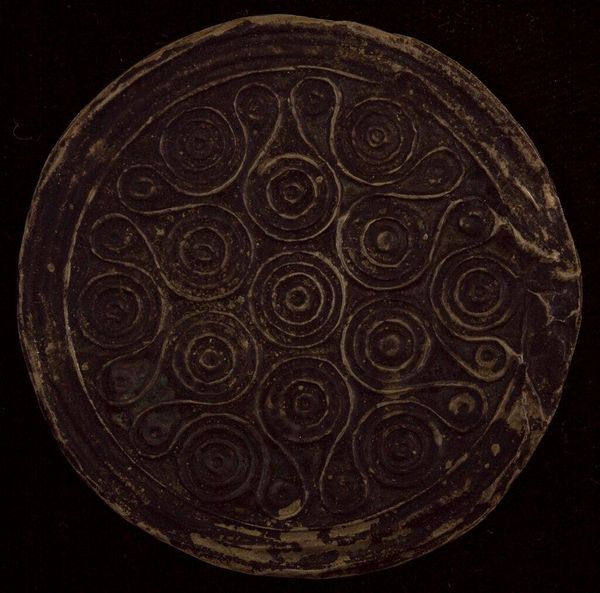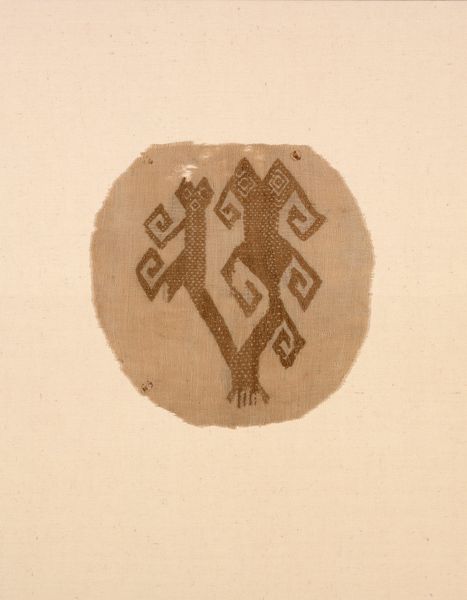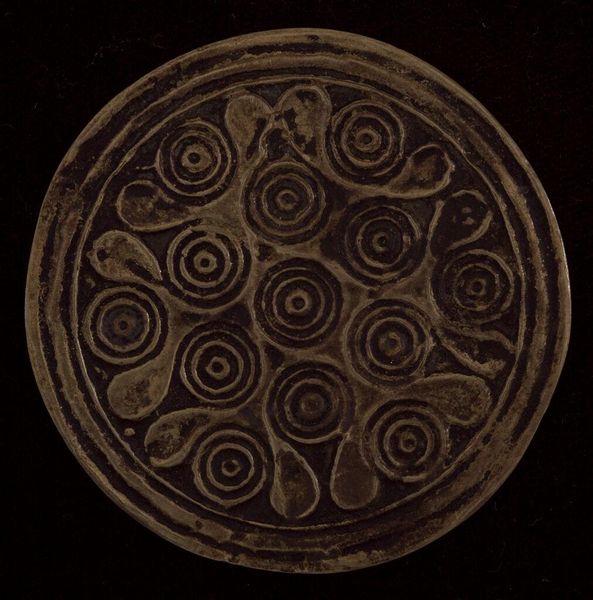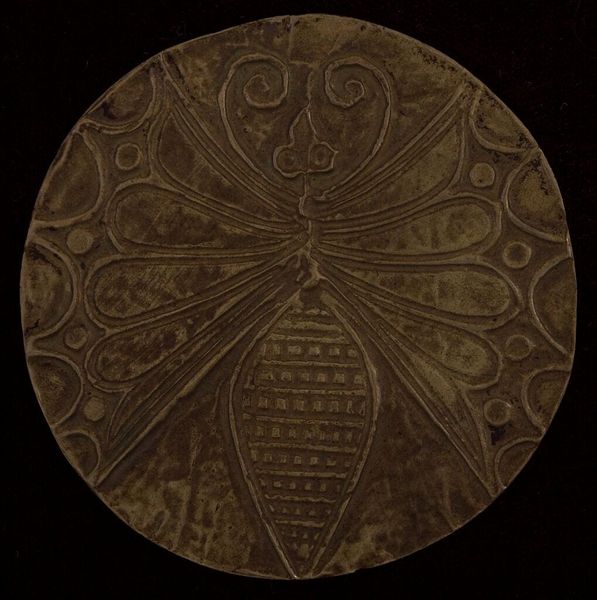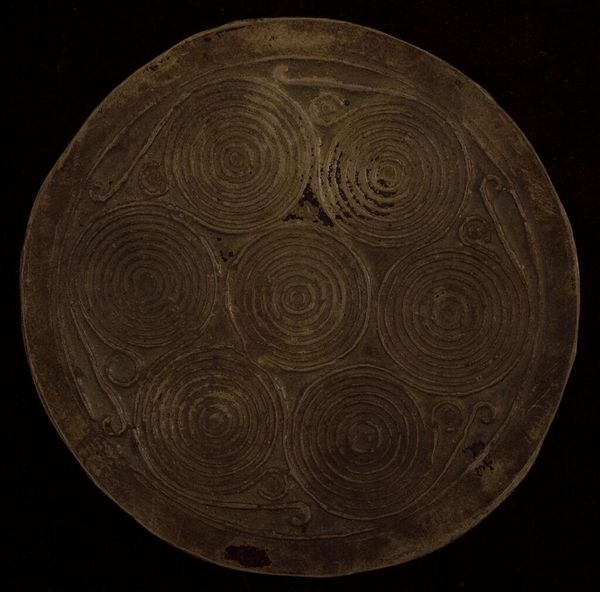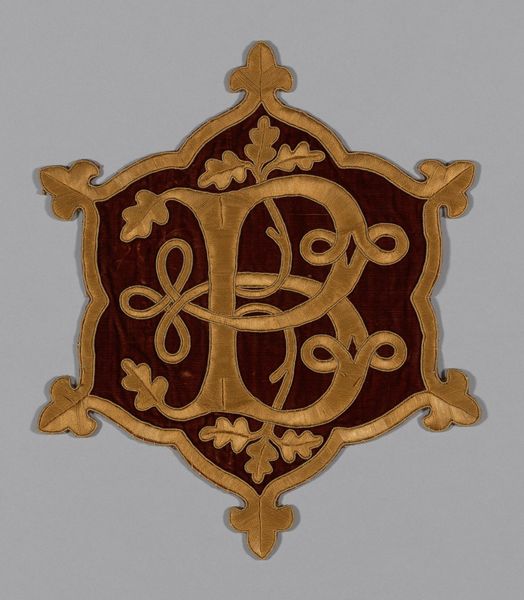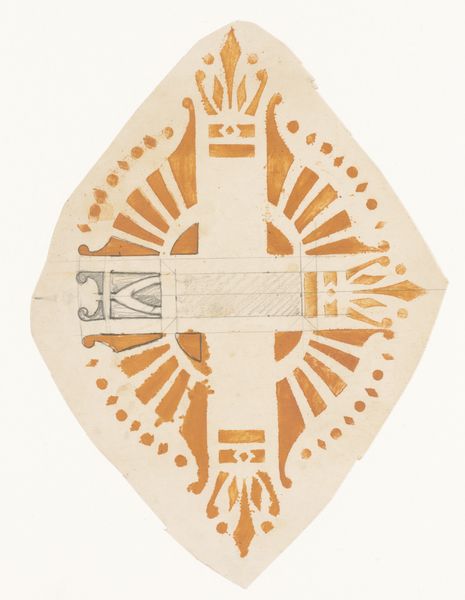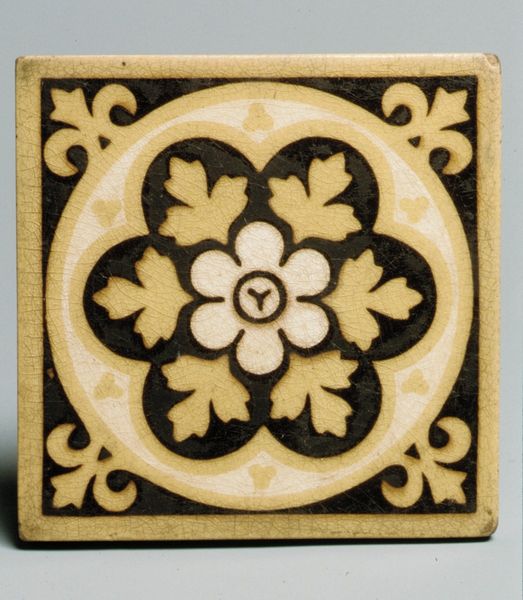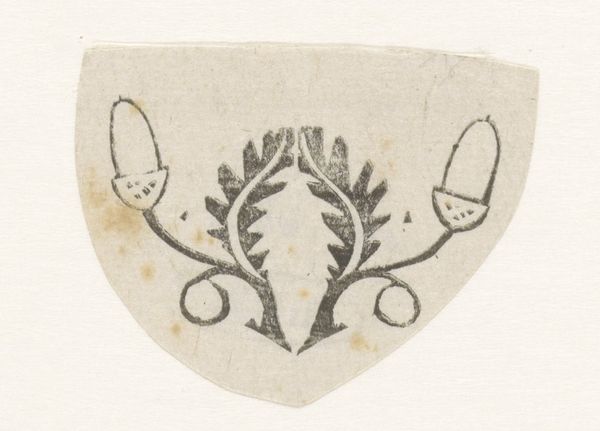
ceramic, earthenware
#
decorative element
#
pattern
#
ceramic
#
earthenware
#
stoneware
#
geometric
#
ceramic
#
islamic-art
#
earthenware
#
decorative-art
#
decorative art
Dimensions: 2 1/4 x 7 15/16 in. (5.72 x 20.16 cm)
Copyright: Public Domain
Curator: Take a look at this unassuming ceramic bowl from around the 9th century, currently housed at the Minneapolis Institute of Art. It's a wonderful example of earthenware. The piece is called “Bowl with diamond,” and its decoration reveals quite a bit about the aesthetic preferences of the period. Editor: First thought? It feels so…grounded. Humble, even. The colours are muted, and there's this beautifully imperfect geometric pattern etched on the surface. It's like holding a piece of history in your hands, one that whispers of everyday life, not grand pronouncements. Curator: Precisely. The decorative elements tell a story of cultural exchange and the adaptation of motifs. We see an interesting tension between geometric precision and what feels like organic, almost floral forms that suggest a dialogue between intellectual rigor and natural observation. It would be interesting to contextualise the gendered dynamics of ceramic production during that period. Who was afforded creative expression in this medium? Editor: Ah, gender in ceramics, a fascinating can of worms! To me, that central floral image looks like the naive rendering of something loved—like a child’s drawing of a garden. What kind of emotions did they experience when crafting and who used it afterwards? It all feels so domestic and familiar! Curator: Considering its age and function, it would likely be situated in a household setting, underscoring the relationship between domesticity and the artistic expressions within Islamic art. We should also investigate the use of diamond shapes, which is culturally relevant given how many meanings diamond carries as signs in the Ancient culture! Editor: Yes! I keep picturing the bowl filled with dates or olives, sitting on a rough-hewn table, catching the light streaming through a window. It's the silent witness to countless meals and conversations, holding the memory of lives lived. Thanks for the insights—makes it more alive, doesn’t it? Curator: Indeed, approaching it through an interdisciplinary lens helps reveal its social and historical textures. A seemingly simple bowl now has added dimensions of complexity and importance that resonate beyond just visual pleasure!
Comments
minneapolisinstituteofart about 2 years ago
⋮
These rare bowls typify those that apparently were made primarily in Iraq during the first Abbasid period of the ninth and tenth centuries. They are important early examples of ceramics decorated with cobalt-blue oxide, a Middle Eastern invention. During the period of Mongol rule in the fourteenth century, technically superior Chinese blue-and-white ware began to be exported to the Middle East, where it gained immediate popularity among the Muslim upper classes and influenced Middle Eastern styles for centuries to come.
Join the conversation
Join millions of artists and users on Artera today and experience the ultimate creative platform.
